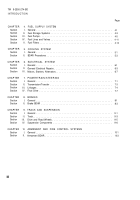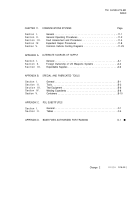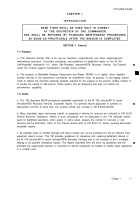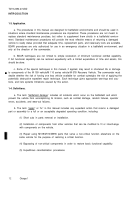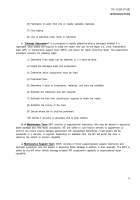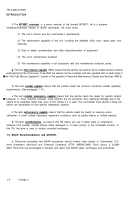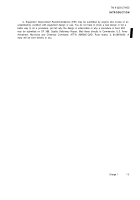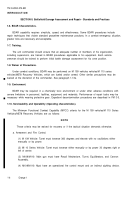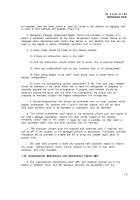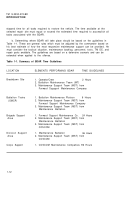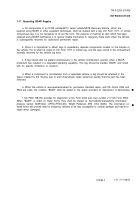TM-9-2350-274-BD - Page 22 of 219
TM 9-2350-274-BD
INTRODUCTION
not possible, then the turret should at least be turned in the direction of engaging fires
in order to limit damage and possibly return fire.
d. Battlefield Damage Assessment/Repair Forms are provided in Chapter 2 to
permit a systematic assessment by the crew.
Assessment checks include looking at the
damaged parts, determining what system they belong to, and deciding how they can be
fixed or jury-rigged to permit immediate operation (full or partial).
e. A safety check should be made for any obvious hazards.
(1) I
S
there an ammunition round in the tube?
(2) Are any ammunition rounds critical due to shock, fire, or physical damage?
(3) Have any combustibles such as fuel, hydraulic fluid, or oil accumulated?
(4) Does wiring appear to be safe? Could arcing occur to stored ammo or
leaking combustibles?
(5) I
S
the fire extinguishing system operational? If not, then one crew member
should be stationed in the turret, either with a hand fire extinguisher or prepared to
manually operate the turret fire extinguisher. A second crew member should be
stationed outside the turret with the other fire. extinguisher. He should also be
prepared to manually actuate the engine compartment fire extinguisher.
f. A functional/operational test should be performed next on those systems which
appear undamaged. For systems with a built-in self-test feature, this will be done,
Only those systems found to be damaged or inoperative, shall be identified.
g. The vehicle commander shall report to the executive officers post the results of
the crew's damage assessment, naming the major known causes of the vehicle's
immobility and/or lack of fire power.
If repair by crew is possible, he shall report a
total estimated repair time and what functions may be restored.
h. The executive officers post will respond with directives and, if required, will
call an MT to the location of the damaged vehicle for assistance. If possible, sufficient
information will be provided to enable the MT to bring any needed repair parts or
special tooIs.
i. The crew shall proceed to make any possible field expedient repairs to restore
fire power, communications and/or vehicle mobility to the limit of their skills,
materials, and tools available.
1-14. Organizational Maintenance and Maintenance Teams (MT).
a. The organizational maintenance team (MT) and assessor operate out of the
battery or battalion trains. The MT assessor performs his assessment and the
1-9
Back to Top

